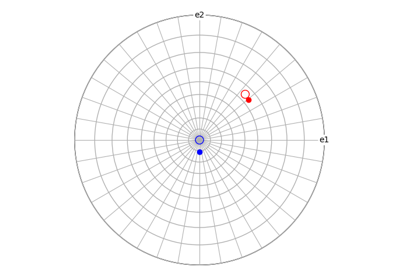Misorientation#
- class orix.quaternion.Misorientation(data: Union[ndarray, Misorientation, list, tuple], symmetry: Optional[Tuple[Symmetry, Symmetry]] = None)[source]#
Bases:
RotationMisorientation object.
Misorientations represent transformations from one orientation, \(g_1\) to another, \(g_2\): \(g_2 \cdot g_1^{-1}\).
They have symmetries associated with each of the starting orientations.
- Parameters:
- data
Quaternions.
- symmetry
Crystal symmetries.
Attributes
Return or set the crystal symmetries.
Methods
Misorientation.equivalent([grain_exchange])Return the equivalent misorientations.
Return a new rotation instance collapsed into one dimension.
Misorientation.from_align_vectors(other, initial)Return an estimated misorientation to optimally align two sets of vectors, one set in each crystal.
Misorientation.from_scipy_rotation(rotation)Return misorientations(s) from
scipy.spatial.transform.Rotation.Return the symmetry reduced smallest angle of rotation transforming every misorientation in this instance to every other misorientation [Johnstone et al., 2020].
[Deprecated] Return equivalent transformations which have the smallest angle of rotation as a new misorientation.
Return the reduced misorientations with the smallest rotation angles.
Misorientation.reshape(*shape)Return a new object containing the same data with a new shape.
Misorientation.scatter([projection, figure, ...])Plot misorientations in axis-angle space or the Rodrigues fundamental zone.
Return a new object with length one dimensions removed.
Misorientation.transpose(*axes)Return a new object containing the same data transposed.
